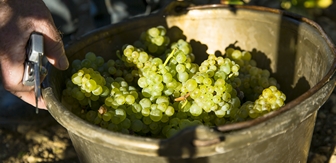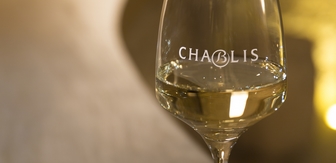A FEW USEFUL TERMS
AOC : Appellation d’Origine Contrôlée (AOC) is a classification that recognizes the quality of a terroir, a characteristic expression of a varietal, cultivation practices developed over centuries and a specific microclimate for a given territory.
Aroma: An aromatic sensation captured and identified through the nose. Even when the wine is in the mouth, the aromatic molecules are perceived through the nose, using a process of retronasal olfaction. In the mouth, only tactile sensations are identified (acidity, astringency, salt, sugar, sweetness…). The aromas are classified according to their origins. Primary or varietal aromas exist in the grape and are typical to each varietal. Secondary aromas emerge during the alcoholic fermentation process and are present in young wines. Tertiary aromas emerge when the wines are aged.
Body: A wine with body has both a good tannic structure, balanced out by smoothness and fatness in the mouth and a good level of alcohol.
Brilliance: This is used to describe a wine that shows bright, even crystalline reflections.
Cap: The foil cap that covers the neck of a wine bottle. There are several types. The capsule must be easily cut using a knife, leaving an edge that’s not too sharp.
Chardonnay: The most famous white varietal in the world. For several centuries, this grape, which originated in Bourgogne, has been used in this area to make mainly dry white wines.
Color: There are three main colors of wine - white, red and rosé. Each is then available in a multitude of different shades, and can vary in terms of brilliance, clarity and intensity.
Crystalline: A brilliant, dazzling wine, that sparkles like crystal.
Delicate: A delicate wine is a quality wine that is balanced and sophisticated. A wine marked by a certain subtlety and elegance, compared to a more powerful, full-bodied and fleshy wine.
High-clearance tractor: An agricultural machine that can straddle rows of vines.
Feuillette: A local barrel size used as a unit of volume. In Chablis, wine transactions are based on feuillettes, barrels holding 132 liters.
Floral: Used to describe a wine with floral notes.

Fruity: A wine whose aromatic and gustatory character has notes of grape or other fruits whether fresh, ripe, cooked or even dried.
Gold: The color of the precious metal, sometimes with hints of gray or green.
Light: A wine that is generally light in color, with a low level of alcohol and modest tannins but which is nonetheless perfectly balanced and a delight to drink.
Mouth: Indicates the sensations perceived when the wine is in the mouth during the tasting process. The mouth is about physical sensations: the texture of a wine, its mouthfeel, density, finesse and sophistication, and sparkle, if any. In the mouth, a wine is analyzed over three phases: the attack, the evolution and the finish. Even when the wine is in the mouth, it is the nose that experiences the aromas through a process of retronasal olfaction.
Nose: A wine’s olfactory characteristics. One talks about a nose that can be intense, rich, complex, floral, fruity, animal, etc.
Roundness: A fleshy, fat, smooth wine with no sharp tannins. A rounded wine caresses the palate. A velvety, balanced wine.
Terroir: In the world of winegrowing, the terroir covers all the natural elements (geographical, geological, pedological, vegetal, climatic, etc.) which, when combined with human influence result in a product that is typical, specific to an area and impossible to produce anywhere else.
Varietal: the variety of vine from the Vitis family of plants. Most of the varietals cultivated around the world and used to make wine come from the Vitis vinifera.
Vintage: The vintage indicates the year in which the grapes to make the wine were harvested. The notion of vintage is particularly significant in Bourgogne. Each vintage marks the style of Bourgogne wines and has an influence on their keeping potential. For example, the 2008 and 2010 vintages produced very typical, pure Chablis wines.
Volume in the mouth: A wine has volume when it fills the mouth with all its aromas and structure.
Weighty: Said of a wine that is noble and powerful, rich, structured and with breadth, that has enough substance to be kept.

